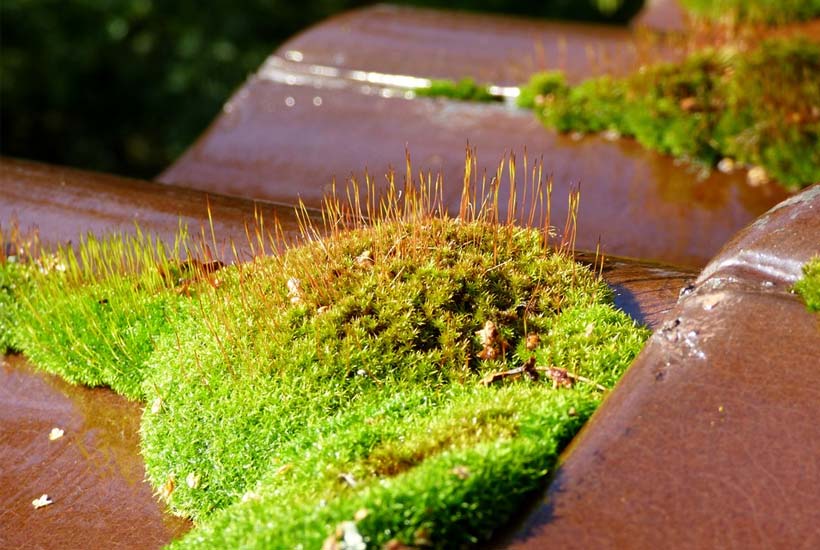Some roofs, called green roofs, are specially designed to house moss and other plants. But, if you live in a typical home with a shingle roof, you don’t have a green roof. Or you shouldn’t, which means any moss you find growing on your roof could be a problem.
We’ll discuss how moss damages your roof and how you can safely remove moss from your roof. We’ll tailor our advice to California specifically.
Why is Moss on the Roof a Problem?
Moss only grows where there is a lot of water. If you have moss on your roof, you likely have an underlying water problem. Perhaps your gutters aren’t draining, or your roof slope is too low. Whatever the problem, moss will make it worse by retaining more water and increasing your chances of a leak.
Moss has a small root system that can do damage to shingles, breaking them down and pushing them off the roof. This damage allows water to penetrate deeper into your roof and home, potentially allowing for rot and serious water damage.
As it grows taller, moss can also push the shingles up. Even after the moss if removed the shingles’ seal may be broken, allowing water into your roof.
Moss isn’t the only problem. We occasionally get calls from homeowners who believe they have moss on their roof, but when we arrive, we find that the small green and black growths are actually lichen or algae. Lichen and algae are smaller infections but they can be just as damaging as moss and leave behind ugly black stains.
How to Remove Moss from the Roof
You might hear that pulling out the garden hose is a simple way to remove moss. But, if you have moss, and not lichen or algae, spraying the moss with water isn’t going to do much but encourage it to grow stronger. Using a power washer is a good way to damage your shingles, so don’t do that either.
Instead, you’ll need to safely climb onto your roof and gently brush off the moss with a stiff bristle brush. We don’t recommend you do this yourself unless you have a safety harness that can keep you on the roof. Moss is easy to slip on, and the shingles may tear off under your feet too.
You can also apply a liquid moss control chemical to kill the moss and prevent it from growing larger. Don’t use bleach, as it can break down your shingles and cause more damage to your roof.
We also don’t recommend the powder moss control if you live in California, because the powder relies on rain to distribute properly and will sit on your roof in clumps until it’s been rained on a few times. If you apply it during a drought, it may not do much except stain your roof.
Ultimately, even if you have removed the moss yourself, you’ll want to get a professional roofer to assess your roof’s condition. The moss may have done permanent damage to the shingles, which will need to be replaced before the next rain.
Your professional roofer may also have advice for you about how to prevent moss on your roof in the future. Proper roof ventilation, chemical treatments and a high-quality shingle can all help prevent moss growth in the first place.

